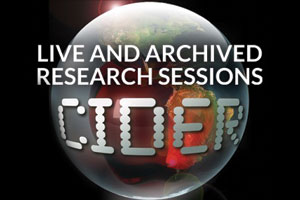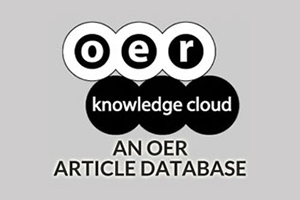Artificial Intelligence in Education: A Bibliometric Study on Its Role in Transforming Teaching and Learning
DOI:
https://doi.org/10.19173/irrodl.v25i3.7757Keywords:
artificial intelligence, bibliometric analysis, bibliographic coupling, co-authorship analysis, co-citation analysis, co-occurrence analysisAbstract
This study aimed to present a comprehensive bibliometric analysis of 1,726 academic studies from among those indexed by the Web of Science database platform between 2013 and 2023, to provide a general framework for the concept of artificial intelligence in education (AIEd). Trends in publications and citations across countries, institutions, academic journals, and authors were identified, as well as collaborations among these elements. Several bibliometric analysis techniques were applied, and for each analysis, the motivations behind the execution and method of producing findings were documented. Our findings showed that the number of studies on the concept of AIEd has increased significantly over time, with the U.S. and China being the most common countries of origin. Institutions in the U.S. stand out from those around the world. Pioneering journals in education have also emerged as prominent in the field of AIEd. On the other hand, collaboration between authors has been limited. The study was supplemented with keyword analysis to reveal thematic AIEd concepts and to reflect changing trends. For those exploring artificial intelligence in education, our insights on popular topics offer valuable guidance toward greater understanding of the latest advancements and key research areas.
References
Argente, J., Martínez-Rico, G., González-García, R. J., & Cañadas, M. (2023). Bibliometric analysis on the implementation of evidence-based practices through building effective systems. Children, 10(5), 813. https://doi.org/10.3390/children10050813
Baek, C., & Doleck, T. (2020). A bibliometric analysis of the papers published in the Journal of Artificial Intelligence in Education from 2015–2019. International Journal of Learning Analytics and Artificial Intelligence for Education, 2(1), 67. https://doi.org/10.3991/ijai.v2i1.14481
Bartneck, C., Lütge, C., Wagner, A., & Welsh, S. (2021). An introduction to ethics in robotics and AI. Springer International Publishing. https://doi.org/10.1007/978-3-030-51110-4
Bozkurt, A. (2023). Generative artificial intelligence (AI) powered conversational educational agents: The inevitable paradigm shift. Asian Journal of Distance Education, 18(1). Retrieved from https://www.asianjde.com/ojs/index.php/AsianJDE/article/view/718
Celik, I., Dindar, M., Muukkonen, H., & Järvelä, S. (2022). The promises and challenges of artificial intelligence for teachers: A systematic review of research. TechTrends, 66(4), 616–630. https://doi.org/10.1007/s11528-022-00715-y
Chaudhry, M. A., & Kazim, E. (2022). Artificial intelligence in education (AIEd): A high-level academic and industry note 2021. AI Ethics 2, 157–165. https://doi.org/10.1007/s43681-021-00074-z
Chen, L., Chen, P., & Lin, Z. (2020). Artificial intelligence in education: A review. IEEE Access, 8, 75264–75278. https://doi.org/10.1109/ACCESS.2020.2988510
Chiu, W.-K. (2021). Pedagogy of emerging technologies in chemical education during the era of digitalization and artificial intelligence: A systematic review. Education Sciences, 11(11), 709. https://doi.org/10.3390/educsci11110709
Donthu, N., Kumar, S., Mukherjee, D., Pandey, N., & Lim, W. M. (2021). How to conduct a bibliometric analysis: An overview and guidelines. Journal of Business Research, 133, 285–296. https://doi.org/10.1016/j.jbusres.2021.04.070
Durso, S. D. O., & Arruda, E. P. (2022). Artificial intelligence in distance education: A systematic literature review of Brazilian studies. Problems of Education in the 21st Century, 80(5), 679–692. https://doi.org/10.33225/pec/22.80.679
Ellegaard, O., & Wallin, J. A. (2015). The bibliometric analysis of scholarly production: How great is the impact? Scientometrics, 105, 1809–1831. https://doi.org/10.1007/s11192-015-1645-z
García-Martínez, I., Fernández-Batanero, J. M., Fernández-Cerero, J., & León, S. P. (2023). Analysing the impact of artificial intelligence and computational sciences on student performance: Systematic review and meta-analysis. Journal of New Approaches in Educational Research, 12(1), 171. https://doi.org/10.7821/naer.2023.1.1240
Gaviria-Marin, M., Merigo, J. M., & Popa, S. (2018). Twenty years of the Journal of Knowledge Management: A bibliometric analysis. Journal of Knowledge Management, 22(8), 1655–1687. https://doi.org/10.1108/JKM-10-2017-0497
Grassini, S. (2023). Shaping the future of education: Exploring the potential and consequences of AI and ChatGPT in educational settings. Education Sciences, 13(7), 692. https://doi.org/10.3390/educsci13070692
Hebebci, M. T. (2021). The bibliometric analysis of studies on distance education. International Journal of Technology in Education, 4(4), 796–817. https://doi.org/10.46328/ijte.199
Hinojo-Lucena, F.-J., Aznar-Díaz, I., Cáceres-Reche, M.-P., & Romero-Rodríguez, J.-M. (2019). Artificial intelligence in higher education: A bibliometric study on its impact in the scientific literature. Education Sciences, 9(1), Article 1. https://doi.org/10.3390/educsci9010051
Ho, Y. S. (2008). Bibliometric analysis of biosorption technology in water treatment research from 1991 to 2004. International Journal of Environment and Pollution, 34(1–4), 1–13. http://dx.doi.org/10.1504/IJEP.2008.020778
Hwang, G.-J., & Tu, Y.-F. (2021). Roles and research trends of artificial intelligence in mathematics education: A bibliometric mapping analysis and systematic review. Mathematics, 9(6), 584. https://doi.org/10.3390/math9060584
Jia, F., Sun, D., & Looi, C. (2023). Artificial intelligence in science education (2013–2023): Research trends in ten years. Journal of Science Education and Technology, 33. https://doi.org/10.1007/s10956-023-10077-6
Joiner, I. A. (2018). Artificial intelligence: AI is nearby. In I. A. Joiner (Ed), Emerging library technologies (pp. 1–22). Chandos Publishing. https://doi.org/10.1016/B978-0-08-102253-5.00002-2
Kaban, A. (2023). Artificial intelligence in education: A science mapping approach. International Journal of Education in Mathematics, Science and Technology, 11(4), 844–861. https://doi.org/10.46328/ijemst.3368
Khanam, S., Tanweer, S., & Khalid, S. (2021). Artificial intelligence surpassing human intelligence: Factual or hoax. The Computer Journal, 64(12), 1832–1839. https://doi.org/10.1093/comjnl/bxz156
Liang, J.-C., Hwang, G.-J., Chen, M.-R. A., & Darmawansah, D. (2023). Roles and research foci of artificial intelligence in language education: An integrated bibliographic analysis and systematic review approach. Interactive Learning Environments, 31(7), 4270–4296. https://doi.org/10.1080/10494820.2021.1958348
Martins, T., Braga, A., Ferreira, M. R., & Braga, V. (2022). Diving into social innovation: A bibliometric analysis. Administrative Sciences, 12(2), 56. https://doi.org/10.3390/admsci12020056
Mohamed, M. Z. B., Hidayat, R., Suhaizi, N. N. B., Sabri, N. B. M., Mahmud, M. K. H. B., & Baharuddin, S. N. B. (2022). Artificial intelligence in mathematics education: A systematic literature review. International Electronic Journal of Mathematics Education, 17(3), em0694. https://doi.org/10.29333/iejme/12132.
Moral-Muñoz, J. A., Herrera-Viedma, E., Santisteban-Espejo, A., & Cobo, M. J. (2020). Software tools for conducting bibliometric analysis in science: An up-to-date review. Profesional de la Información, 29(1). https://doi.org/10.3145/epi.2020.ene.03
Moreno-Guerrero, A.-J., López-Belmonte, J., Marín-Marín, J.-A., & Soler-Costa, R. (2020). Scientific development of educational artificial intelligence in Web of Science. Future Internet, 12(8), Article 8. https://doi.org/10.3390/fi12080124
Pelletier, K., Robert, J., Muscanell, N., McCormack, M., Reeves, J., Arbino, N., Grajek, S., Birdwell, T., Liu, D., Mandernach, J., Moore, A., Porcaro, A., Rutledge, R., & Zimmern, J. (2023). EDUCAUSE horizon report, teaching and learning edition. EDUCAUSE.
Prahani, B. K., Rizki, I. A., Jatmiko, B., Suprapto, N., & Tan, A. (2022). Artificial intelligence in education research during the last ten years: A review and bibliometric study. International Journal of Emerging Technologies in Learning, 17(8), 169–188. https://doi.org/10.3991/ijet.v17i08.29833
Pua, S., Ahmad, N. A., Khambari, M. N. Md., & Yap, N. K. (2021). Identification and analysis of core topics in educational artificial intelligence research: A bibliometric analysis. Cypriot Journal of Educational Sciences, 16(3), 995–1009. https://doi.org/10.18844/cjes.v16i3.5782.
Salas-Pilco, S. Z., Xiao, K., & Hu, X. (2022). Artificial intelligence and learning analytics in teacher education: A systematic review. Education Sciences, 12(8), Article 8. https://doi.org/10.3390/educsci12080569
Salas-Pilco, S.Z., Yang, Y. (2022). Artificial intelligence applications in Latin American higher education: a systematic review. International Journal of Educational Technology in Higher Education, 19, 21. https://doi.org/10.1186/s41239-022-00326-w
Song, P., & Wang, X. (2020). A bibliometric analysis of worldwide educational artificial intelligence research development in recent twenty years. Asia Pacific Education Review, 21(3), 473–486. https://doi.org/10.1007/s12564-020-09640-2
Sapci, A. H., & Sapci, H. A. (2020). Artificial intelligence education and tools for medical and health informatics students: Systematic review. JMIR Medical Education, 6(1), e19285. https://doi.org/10.2196/19285
Su, H. N., & Lee, P. C. (2010). Mapping knowledge structure by keyword co-occurrence: A first look at journal papers in technology foresight. Scientometrics, 85(1), 65–79. https://doi.org/10.1007/s11192-010-0259-8
Talan, T. (2021). Artificial intelligence in education: A bibliometric study. International Journal of Research in Education and Science, 7(3), 822–837. https://doi.org/10.46328/ijres.2409
Tang, K.-Y., Chang, C.-Y., & Hwang, G.-J. (2023). Trends in artificial intelligence-supported e-learning: A systematic review and co-citation network analysis (1998–2019). Interactive Learning Environments, 31(4), 2134–2152. https://doi.org/10.1080/10494820.2021.1875001
Van Eck, N. J., & Waltman, L. (2014). Visualizing bibliometric networks. In Measuring scholarly impact: Methods and practice (pp. 285-320). Cham: Springer International Publishing.
Xu, W., & Ouyang, F. (2022). The application of AI technologies in STEM education: a systematic review from 2011 to 2021. International Journal of STEM Education, 9(1), 59. https://doi.org/10.1186/s40594-022-00377-5
Yin, M. S. (2013). Fifteen years of grey system theory research: A historical review and bibliometric analysis. Expert Systems with Applications, 40(7), 2767–2775. https://doi.org/10.1016/j.eswa.2012.11.002
Zawacki-Richter, O., Marín, V. I., Bond, M., & Gouverneur, F. (2019). Systematic review of research on artificial intelligence applications in higher education: Where are the educators? International Journal of Educational Technology in Higher Education, 16(1), 39. https://doi.org/10.1186/s41239-019-0171-0
Published
How to Cite
Issue
Section
License

This work is licensed under a Creative Commons Attribution 4.0 International License.
This work is licensed under a Creative Commons Attribution 4.0 International License. The copyright for all content published in IRRODL remains with the authors.
This copyright agreement and usage license ensure that the article is distributed as widely as possible and can be included in any scientific or scholarly archive.
You are free to
- Share — copy and redistribute the material in any medium or format
- Adapt — remix, transform, and build upon the material for any purpose, even commercially.
The licensor cannot revoke these freedoms as long as you follow the license terms below:
- Attribution — You must give appropriate credit, provide a link to the license, and indicate if changes were made. You may do so in any reasonable manner, but not in any way that suggests the licensor endorses you or your use.
- No additional restrictions — You may not apply legal terms or technological measures that legally restrict others from doing anything the license permits.







